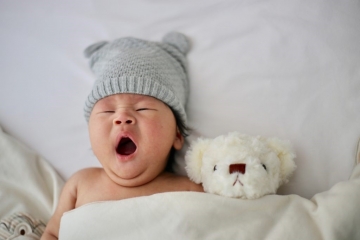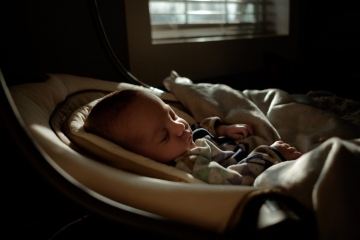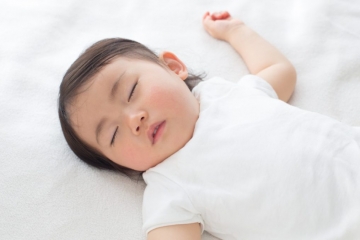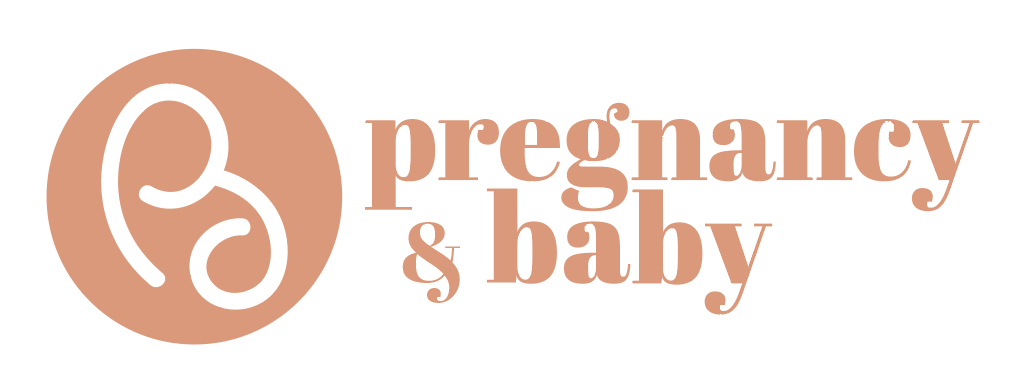
 7 Sleep Tips To Improve Your Baby's Sleep Quality
7 Sleep Tips To Improve Your Baby's Sleep Quality  The Importance of Sleep for Your Baby
The Importance of Sleep for Your Baby  Co-Sleeping With Your Child: Pros & Cons
Co-Sleeping With Your Child: Pros & Cons  Does My Baby Have Eczema? Causes & Treatments
Does My Baby Have Eczema? Causes & Treatments  What Is Healthy Sleep For My Baby?
What Is Healthy Sleep For My Baby? 
It is common for most parents to feel glum when it comes to the slightest discomfort of their precious baby. Do you know Cradle Cap is a common skin condition that affects most babies? Though these scales have a cute name, Cradle Cap, the condition is not as appealing as it sounds. Read on to know how you can help your baby get rid of the scaly patches and have a healthy scalp soon!
Cradle Cap refers to the thick scales of yellowish skin and greasy patches that appear on a baby’s head. Cradle Cap or seborrhoeic dermatitis, milk crust or honeycomb disease, is usually a harmless though unsightly rash that affects babies. Crusts might also be visible on the eyebrows and near the ears of the infant. The scalp becomes dry and may peel, flake or appear red. Though sometimes Cradle Cap covers the entire scalp, it usually affects just a small patch.
Contrary to the common misconception, you should not mistake it for eczema. If left untreated, Cradle Cap heals on its own. But in such cases, the probability of recurrence is higher. As your baby’s hair grows thick, it is likely that the Cradle Cap completely recedes from view.
So,what causes cradle cap in babies?
Continue on next page...
It is not always necessary to treat Cradle Cap. Time is the only effective cure. However, if you find them abominable,cradle cap treatment for babies involve the following methods to heal your baby’s scalp.
1. Use any baby oil for cradle cap. Apply olive oil or petroleum jelly on the baby’s scalp. Leave it overnight. Wash the baby’s hair next morning with a baby shampoo. Towel-dry her hair and gently comb the scales off. Repeat the same process every day until all the scales disappear.
2.Cradle cap shampoo for babies can be an option too to cure this problem.Some baby shampoos contain special formulations to clear Cradle Cap. You may opt for one of them, but be careful to stop the use of the product immediately if you find the skin showing any sign of irritation.
3. You may massage drops of Sorbolene or glycerine on the baby’s eyebrows and ears to remove the scales over there. During bath time, carefully remove the crust using a soft flannel.
4. Topical application of aloe vera gel is an effective remedy for Cradle Caps.
5. Applying a vitamin B6 cream or salve helps treat the skin condition.
6. Antiseborrheic shampoos like Sebulex can come in handy to cure Cradle Cap.
7. Very rarely, the scales can turn itchy. In such conditions, a steroid cream or ointment can be applied to the baby’s scalp. However, seek your doctor’s opinion before using an OTC medication.
8. A multi-vitamin and multi-mineral complex specially formulated for infants can help infants overcome any nutritional deficiency which can cause Cradle Cap.
If you are breastfeeding, you may try the following methods to cure your baby’s Cradle Cap without any medication.
Though there is no absolute way to keep Cradle Cap at bay, you may follow the guidelines to reduce its incidence.
Cradle Cap is not a reason to hit the panic button. Though unpleasant to look at, try ignoring them and give it some time to disappear gradually. Relax, your baby will be fine soon!
Subscribe to our mailing list and LIKE US to receive our latest updates!
Copyrighted Pregnancy & Baby by Mummys Market 2019


